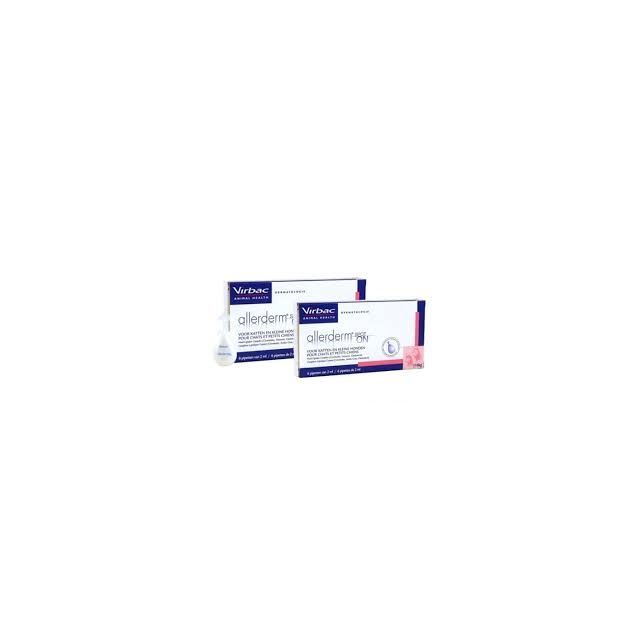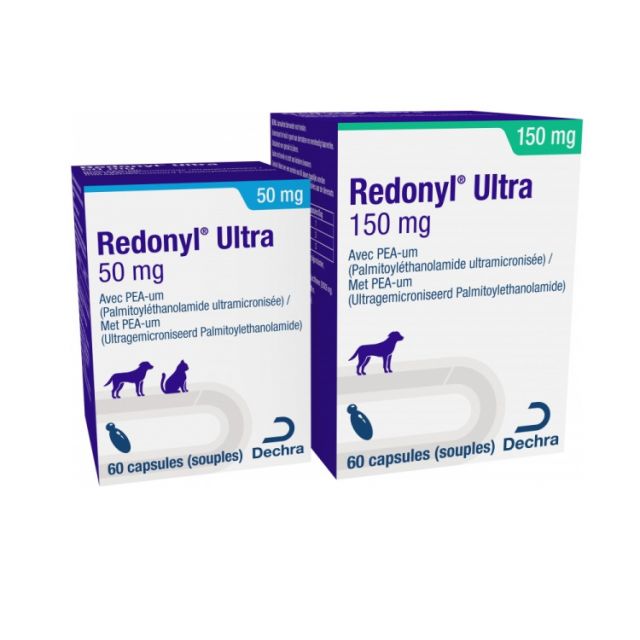Atopy in dogs
Atopy is a collective term for skin problems in dogs caused by allergic reactions to substances in the environment. Another term is atopic dermatitis. The principle of atopy can be compared to hay fever in humans. The dog exhibits an excessively strong reaction after contact with certain allergens (such as grass pollen or dust mites). Unlike in humans with sniffles and sneezes, dogs show symptoms of itching and skin inflammation. Symptoms caused by pollen are often seasonal, while other allergens can cause problems throughout the year.
Which dogs are affected by atopy?
In 75% of atopic dogs, symptoms begin at a young age (under 3 years old, but older than six months). Certain breeds are more susceptible to atopy than others. Popular dog breeds with a high sensitivity to atopy include West Highland White Terriers, Jack Russell Terriers, German Shepherds, Boxers, Golden Retrievers, and Labrador Retrievers. Additionally, Shar-Peis, Bull Terriers, Staffordshire Bull Terriers, Shih Tzus, Labradoodles, Cocker Spaniels, and various types of bulldogs (English, French, and American) can also be sensitive to atopy.
Symptoms of atopy in dogs
The main symptom of atopic dermatitis is itching. Preferred spots for itching in atopy include the head (muzzle, around the eyes, ears), paws, armpits, groins, and under the tail. Especially in dogs with light coats, you'll notice that licking the paws causes the fur to turn reddish-brown. Additionally, bald patches, redness, and flaking are possible. Excessive scratching and biting can exacerbate symptoms, leading to wounds or inflammation. Secondary infections with bacteria and/or yeasts often occur.
A recurring ear infection is a common symptom in dogs with atopic dermatitis. We also frequently observe hot spots due to itching.
If the allergy becomes chronic (meaning it is recurrent or long-lasting), skin thickening can occur, and the skin may turn black. This is referred to as a so-called elephant skin.
Sometimes, atopy occurs in combination with food sensitivity, and then gastrointestinal symptoms such as diarrhea or vomiting may also occur.
Diagnosing 'atopy': step by step
It is extremely important to systematically address skin problems step by step. Especially if the problems are severe or recurrent, a correct diagnosis can save your dog a lot of suffering and save you a lot of time and money. Often, multiple factors play a role: due to an allergy, the skin barrier, the natural protection of the skin against external influences, is often weakened. Additionally, small wounds occur due to scratching. Secondary infection by yeasts or bacteria is therefore common. It goes without saying that treating only the allergy or only the secondary infection will not work.
There is no specific test to diagnose atopy. It is a diagnosis made based on symptoms and by excluding other causes of itching.
The anamnesis
The first step is the anamnesis, the interview. By mapping out when your dog is itching, where the complaints manifest, and what the symptoms are exactly, several things can be excluded.
Skin examination
Next, your dog's skin is thoroughly examined. Microscopic examination of skin scrapings and tape preparations (a piece of tape or an object slide is pressed onto your dog's skin, causing cells and certain 'creatures' to stick) is indispensable. This way, bacteria, yeasts, and mites (such as Sarcoptes (scabies mite), Cheyletiella (fur mite), or Demodex ('puppy scabies')) can be discovered.
Allergy tests
If the first two steps indicate that your dog likely has an allergy, a distinction must be made between atopy and other allergies such as flea allergy, food allergy, contact allergy, or allergy to administered medications.
A conclusive flea treatment and an elimination diet are often done first. If it turns out that your dog does not have flea or food allergies, and parasites or other creepy-crawlies are not the cause of your dog's skin problems, the diagnosis 'atopic dermatitis' remains.
An intradermal skin test or a blood test can be used to investigate whether allergens to which the dog is sensitive can be detected. These latter two tests are not used to diagnose atopy but to try to determine what your dog is allergic to once that diagnosis has been made.
Allergy tests on hair and saliva are pointless and a waste of your money.
Treating atopy in dogs
Because atopy is a chronic condition, lifelong or at least regular treatment is often necessary. Often, not one specific medicine is sufficient, but treatment involves multiple aspects.
Medications for itching.
Itching is the main symptom of atopy in dogs. Virtually every dog with atopy needs medication occasionally or regularly to suppress itching.
In the past, this could only be done with corticosteroids, medications that strongly suppress allergy and therefore itching, but unfortunately also cause many side effects. Fortunately, many new drugs have become available in recent years that seem to be safer and very effective in suppressing itching. Sometimes, it is sufficient to apply medication locally, for example in the form of a spray. This way, the drug does not enter the systemic circulation, reducing the risk of side effects.
Sometimes it takes some searching to find which treatment works best for your dog. Because Pharmacy4pets is a pharmacy, you can also order medication for itching with a prescription from your own veterinarian.
Treatment of (secondary) inflammations and skin infections
Dogs with atopy often have recurring infections that sometimes require medications such as antibiotics, medicated shampoos, or (ear) ointments.
Often, the skin can be kept calm by regularly using a mild antibacterial shampoo or mousse such as Douxo Pyo.
Desensitization
In this treatment, also known as hyposensitization, your dog receives injections of the substances to which he is allergic. The injection fluid is specially developed for your dog based on the results of the blood and skin tests. By giving these allergens at increasingly longer intervals in increasingly higher doses, your dog can become tolerant to these allergens. Approximately 60 to 70% of dogs respond positively to the treatment. If successful, the injections must be given lifelong.
Supporting the skin barrier
The weakened skin barrier of dogs with atopy causes problems: on one hand, protection against invaders from outside such as bacteria and yeasts is less effective, and on the other hand, the skin dries out much faster because the skin barrier does not retain moisture as well. The good news is that the skin barrier can be supported from the inside and outside, which can significantly contribute to better skin condition.
You can support your dog's skin barrier from the inside by giving extra omega-3 fatty acids (EPA and DHA) from fish oil: Doils Skin, Megaderm, or Vetoquinol Care Omega 3-6.
Redonyl Ultra contains not only fatty acids but also PEA-um and biotin to support the skin.
A natural supplement based on plant extracts is Puur Derma.
You can support your dog's skin barrier externally with the spot-on product (drops for the skin) Allerderm Spot-On. Allerderm contains a lipid complex that is similar in composition and structure to the lipids in the skin barrier. This helps the spot-on product in the repair of the skin barrier.
Additional tips for dogs with atopy
- A dog with sensitive skin should not be bathed too often. If necessary, use a mild, moisturizing shampoo such as Dermoscent Atop 7 shampoo or Allermyl. A honey-based shampoo is also extremely gentle and nurturing for your dog's atopic skin.
- Keep your dog's coat short with a good trimmer. Brush your dog regularly with a soft brush.
- Remember to provide good sun protection for the thinly haired areas during sunny months.
- Use a soothing ear cleaner such as CleanAural Sensitive regularly to keep the ears of your atopic dog clean if they are prone to ear infections.
- Keep skin folds clean and dry with special wipes.
- Moisturize dry skin with an oatmeal-based moisturizing lotion such as DermAllay Oatmeal Conditioner Spray.
- Regularly check your dog's paws for the presence of grass awns or wounds. Dogs with atopic dermatitis have very sensitive paws. Protect your dog's paw pads with Paw wax based on honey and beeswax.
- Good flea control prevents unnecessary scratching.
Atopy is an unpleasant chronic condition that unfortunately never completely goes away. A completely symptom-free atopic dog is rarely achieved. From time to time, itching and skin inflammation flare up. With the right care and medication, however, symptoms can often be reasonably to well suppressed.
If you have any questions about our products or about atopy in your dog, please contact us.


